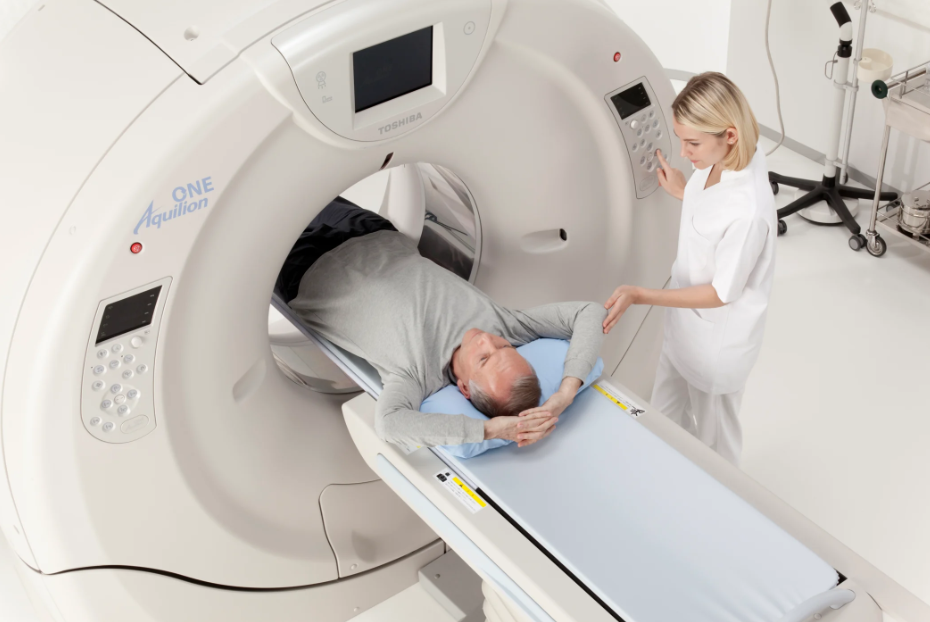Computed tomography, or CT, is an imaging test that uses X-rays to generate images of the body that are processed by a computer, which may be the bones, organs, or tissues. This test does not cause pain, so it can be performed on anyone. Pregnant women should preferably opt for other tests before computed tomography such as ultrasound or magnetic resonance imaging, since radiation exposure is greater in CT.
A CT scan may use contrast, which is a type of fluid that can be swallowed, injected into a vein, or inserted into the rectum during the exam to make it easier to see certain parts of the body.
CT should always be performed under medical guidance, since there is exposure to radiation, which can be detrimental to health when not properly guided.
What is it for
Computed tomography serves as an aid for the diagnosis of muscle and bone diseases, identifying the location of a tumor or clot, as well as detecting and monitoring diseases and injuries. The main types of scans are:
Skull tomography: Indicated for the study of traumas, infections, in case of hemorrhage, hydrocephalus or presence of aneurysms;
Abdominal and pelvic tomography: Requested to evaluate the evolution of tumors and abscesses, in addition to checking the acuity of appendicitis, lithiasis, renal malformation, pancreatitis, pseudocysts, liver lesions, cirrhosis and hemangioma;
Tomography of upper and lower limbs: Used to evaluate muscle injuries, fractures, tumors and infections;
Chest tomography: Indicated for the study of infections, vascular diseases, tumor tracking and evaluation of their evolution.
Also Read: What are the benefits of CT scans?
Normally, tomography of the skull, thorax and abdomen are done with contrast so that the structures can be better visualized and it is possible to easily distinguish the different types of tissues.
Computed tomography is generally not the first choice for diagnostic testing, since radiation is used to generate images. In most cases, the doctor recommends other tests such as X-rays, depending on the location of the body.
Advantages and disadvantages of CT
Computed tomography is a test that is widely used as a diagnostic aid in various diseases, allowing sections (parts) of the body to be evaluated and providing clearer images that allow different tissues to be distinguished. Being a versatile test, CT is considered the test of choice for the investigation of brain or lung nodules or tumors.
The disadvantage of CT is the fact that the examination is done through the emission of radiation (X-rays), which, even if it is not in very large quantities, can have harmful effects on health when the person is constantly exposed. to this type of radiation. In addition, depending on the objective of the exam, the doctor may recommend the use of contrast, which may have some risks depending on the person, such as allergic reactions or toxic effects on the body. See what the possible risks of contrast-enhanced exams are.
How to prepare for the exam
Before performing the tomography, it is important to fast according to the doctor’s instructions, which may be from 4 to 6 hours so that there is better absorption of the contrast. In addition, it is important to stop the use of metformin if you are taking it, 24 hours before and 48 hours after the exam, since there may be a reaction with the contrast.
During the exam, the person remains lying on a table and enters the tomograph, which is shaped like a ring, for 15 minutes.





